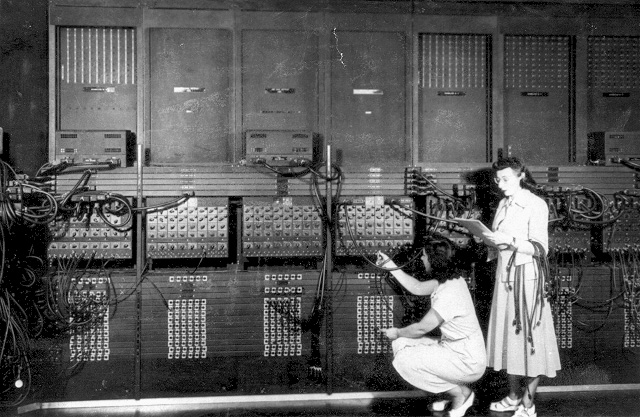History
Mid-1990s (1994-1997)
This period marks a foundational phase in ENIAC scholarship, characterized by efforts to comprehensively define its historical significance, technical characteristics, and the human element behind its creation. Initially, the focus was on its core utility as a computational tool, as seen in "ENIAC-a problem solver" (1994). This quickly broadened in 1996, with a surge of articles exploring various facets of the machine. There was a strong emphasis on establishing ENIAC's place in the lineage of modern computing, examining its architectural details ("Exploring the Architecture of an Early Machine: The Historical Relevance of the ENIAC Machine Architecture"), its role in shaping fundamental computing concepts like "programming" ("The ENIAC, the Verb 'to program' and the Emergence of Digital Computers"), and importantly, recognizing the vital, often overlooked, contributions of its human operators ("The Women of ENIAC"). By 1997, the historical lens expanded further to consider the context "Before the ENIAC," signaling a more holistic understanding of its origins. This period collectively worked to solidify ENIAC's identity as a pivotal machine, both technologically and socially.
Mid-2000s (2006-2007)
A decade later, the narrative around ENIAC shifted from defining its initial impact to re-evaluating its legacy through new perspectives and tools. A key theme emerging in 2006 was the exploration of ENIAC's "life" beyond its operational years, both metaphorically and virtually. Articles like "The Second Life of ENIAC" and "The Virtual Life of ENIAC: Simulating the Operation of the First Electronic Computer" highlight an interest in digital preservation and reconstruction, using modern technology to understand this historical machine. Furthermore, the scope of its influence expanded beyond scientific and military applications, with "The ENIAC's Influence on Business Computing, 1940s-1950s" uncovering new domains of impact. Personal recollections also gained prominence, offering firsthand accounts ("What I Remember of the ENIAC"). A significant development in 2007 was a critical technical re-assessment, as "ENIAC as a Stored-Program Computer: A New Look at the Old Records" indicates a deeper dive into its architectural classification based on new historical evidence. This period represents a shift towards more nuanced interpretations, leveraging new analytical methods, and revisiting foundational technical debates.
Early 2010s (2012-2014)
The most recent period in our dataset showcases a refined focus on specific historical applications of ENIAC, delving into detailed case studies of its early computational endeavors. Moving beyond general descriptions or re-evaluations, these articles highlight concrete examples of ENIAC's groundbreaking work. For instance, "The ENIAC's 1949 Determination of π" (2012) pinpoints a specific mathematical achievement, demonstrating its precision and early capabilities. This detailed focus continued in 2014 with "Los Alamos Bets on ENIAC: Nuclear Monte Carlo Simulations, 1947-1948," which reveals its critical role in high-stakes scientific projects from its nascent years. This marks a shift from broader historical context to a more granular, evidence-based exploration of ENIAC's direct contributions to challenging computational problems, underscoring its practical utility and impact during its operational prime.

